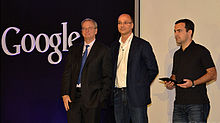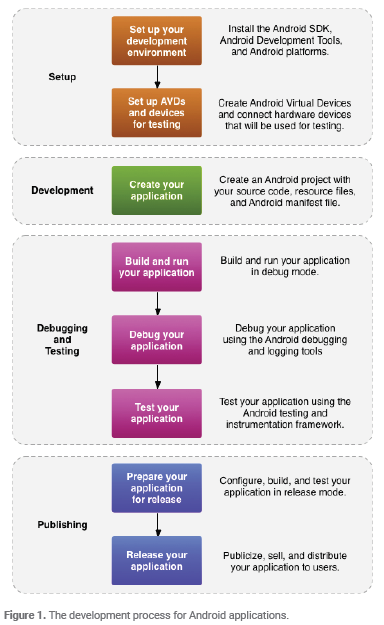What do people choose to develop App in Android?
A.
Read more 'Why developers choose Android' here.
Read more on why innovative developers choose Android over iOS here.
Read about 10 reasons why developers choose Android over iOS here.
For any developer looking to maximize their potential users, regardless of language or country, Android is an obvious choice. It is evident that developers have been making that choice too. As its market share has steadily risen since being introduced in 2008, so have the number of available apps. While actual numbers vary widely by source, Android and iOS seem to be neck and neck in total number of apps available-just around 900,000 each.
We can also expect an impressive (however inflated) update from Google in the coming weeks with the impending announcement of a new Nexus device or devices in conjunction with Android 4.4 KitKat. Those who may want to jump ahead a little and fact check are free to reference AppBrain’s daily statistics, which have the Google Play store measured at 875,462 apps as of this writing. In early 2016, it was reported close to 1.5 million Android App had been deployed in Google Play Store.
For the novice, the entry point for development on Android is simple and welcoming. Those who are familiar with iOS and have likely paid the $99 annual enrolment fee, might be surprised at the $25 one-time registration fee for Google Play. From there, developers have have complete control over distribution with options that allow them to target specific devices, carriers, languages and countries.
Another reason to choose to develop applications in Android is the cost of entry to be listed in Google Play Store is much cheaper than that of Apple App Store! This is ease of access.
For the novice, the entry point for development on Android is simple and welcoming. Those who are familiar with iOS and have likely paid the $99 annual enrolment fee, might be surprised at the $25 one-time registration fee for Google Play. From there, developers have have complete control over distribution with options that allow them to target specific devices, carriers, languages and countries.
Newly published apps on Google Play are also available almost instantly, due primarily to Google’s automated approval process. There is of course still a bit of the honor system in play here in regards to publishing content that is or is not allowed, but for stability and security, Google is able scan an application and approve it within a matter of hours rather than weeks as with iOS. However, algorithms aren’t the only line of defense in protecting users from “bad” applications, as Google has been known to regularly remove apps that violate Play Store terms and conditions.
As you can see from the above Ease of Access chart, most continents uses Android in more than half of the devices.
One of the key advantage of publishing App in Android is because it is by Google! Why?
Because Google has its supports like Google Maps, which provides location specific for Apps which require integration of locality to its functions. Google’s own apps and services are another great example of where Android really shines. Google Location Services for example, can allow applications to display and find maps, navigation and other data that can be deeply integrated into your own apps.
And, to compare files transfer. There is no way your iPhone or iPad would allow you to cut and paste your movies and transfer back to iTune! There is no USB port for your transfer to the computer. Only some picture files in DCIM, that is it! This is not a problem with Android or Window based OS.
Ref:
http://www.androidauthority.com/why-developers-choose-android-285774/




